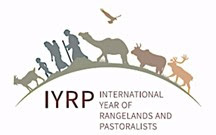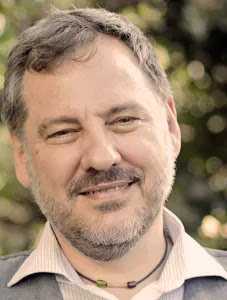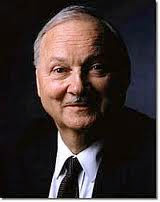Guest blog: UN called to do more to support the world’s pastoralist peoples to help meet the Sustainable Development Goals
Guest blog: Maryam Niamir-Fuller Highlights of a side event — Sustainable pastoralism and rangelands: Impacts of COVID-19 and how not
to leave them behind in the 2030 Agenda for Sustainable Development — held
at the United Nations High-Level Political Forum on Sustainable Development on
6 July 2021 and organized by the Government of Mongolia and the International
Support Group for the International Year of Rangelands and Pastoralists (IYRP).
Ambassador Enkhbold Vorshilov, the Permanent Representative of Mongolia to the United
Nations, opened the side event and called on the UN Sustainable
Development Goals (SDGs) to bring innovative and integrated solutions for
pastoralists and rangelands, which have largely been left behind.
Rangelands cover 54% of the Earth’s landmass, stated Iain
Wright, Deputy Director General of the International
Livestock Research Institute (ILRI), drawing on a recently released Rangeland Atlas that has advanced knowledge of
the full extent of rangelands. Rangelands
are found in almost every country of the world and face common problems, said William
Payne, Dean of the College of
Agriculture, Biotechnology and Natural Resources at the University of Nevada at
Reno, in the USA. Maintaining the integrity
and productivity of the ecosystem goods and services that rangelands generate,
he argued, is critical not only to the environment but also to the livelihoods
of over half a billion people in over 100 countries worldwide. (For more
information on this, watch this 2.5-minute IYRP film calling for the United Nations to designate an
International Year of Rangelands and Pastoralists at the September 2020 session
of the Committee on Agriculture of the Food and Agriculture Organization of the
United Nations).
An increasing number of environmental, socioeconomic and
political threats jeopardize the integrity of rangelands and the security of rangeland
livelihoods. Addressing just any one of these threats is insufficient. Pradeep
Kurukulasuriya, who leads the Nature, Climate Change
and Energy Team at the United Nations Development Programme, highlighted the need for integrated, inclusive solutions. Addressing
all SDGs can benefit multiple crisis areas, including equitable development,
climate change mitigation, and resilience to, and recovery from, pandemics and
natural disasters.
Pastoralists are key to stewarding, conserving and sustainable managing rangelands. Most rangelands are not suited to crop production. Anders Oskal, Secretary General of the Association of World Reindeer Herders, highlighted the depth of knowledge of pastoralists, including more than 350 words for snow in the Sami language (SDG #16). Pablo Frere, the focal point of Pastoramericas (Latin American Alliance of Pastoralists) in the World Alliance of Mobile Indigenous Peoples (WAMIP), talked of autonomous solutions devised by pastoralists, such as nature-based livestock products (SDG #15) and increasing pastoral mobility as a resilience strategy (SDG #13), and called on governments to support them. Baschirou Issa, who is Technical Secretary for Africa for the Indigenous Peoples Major Group for Sustainable Development Goals, stressed the critical importance of securing land tenure for sustainable livelihoods and food security and of preventing injustice and conflicts (SDG #16). Vibhabhai Saanga Rabari, a pastoralist from Kucch, in Gujarat, India, speaking through translator Natasha Maru, a PhD student at the UK’s Institute of Development Studies, talked of the importance of pastoralism for alleviating poverty not just among pastoralists but also among crop farmers who benefit from pastoral herds (SDG #1) and called for greater respect and recognition of pastoralist roles and value.
Pastoralism is a sustainable source of healthy meat and milk
(SDG #12). Frere reported that in Argentina alone 35,000 pastoralist households
generate USD300 million annually – a sizeable contribution to the nation’s GDP
(SDG #8). Wright said that while 30 million of Africa’s pastoralists are
classified as poor, most meat consumed in African countries comes from pastoralists
on rangelands. Payne reported that the value of goods and services from
rangelands globally can reach USD18.4 trillion annually (SDG #15). Better rangeland management will also reduce
out-migration and help ensure gender equity, he said. Sadia Musse Ahmed,
Country Representative of the Pastoral and Environmental Network in the Horn of
Africa (PENHA) for Somaliland/Somalia, called for better recognition and
empowerment of pastoralist women (SDG #5).
Payne reported that in the USA alone, grazing lands could potentially annually remove 198 million
tons of the greenhouse gas carbon dioxide from the atmosphere (SDG #13).
And Wright highlighted emerging scientific evidence that the potential for
capturing carbon from rangelands could be higher than that from forests.
In many countries, public health services are difficult to
reach for mobile and remote pastoralists (SDG #3), as pointed out by Hussein
Tadicha Wario, Executive Director of the Center
for Research and Development in Drylands (CRDD), in Kenya. He said that COVID-19-related restrictions on markets and
on mobility to grazing areas have hurt pastoralist incomes and contributed to
land degradation, even while the inherent resilience of pastoralist communities
has helped them to cope with the pandemic. Wright argued that livestock as well
as people must benefit from better health services in many countries – ideally
through a combined “One Health” approach. And he pointed out that, contrary to
perceptions in some media, pastoralism and livestock mobility have not been responsible
for the spread of COVID-19.
Throughout history, pastoralists have faced environmental
and socioeconomic unpredictability. In response, they have evolved ways to adapt,
including by moving to find resources and remaining flexible, characteristics
that continue to form the basis of their remarkable resilience. Climate change
and disease pandemics add more pronounced flux and variability to rangeland
ecosystems, said Wario, but the historical knowledge and resilience of
pastoralist peoples and communities should continue to help them “build back
better” following such shocks.
The future of pastoralism is in doubt in many countries because of the
exodus of youth, as pointed out by the moderator of this side session, Ilse Koehler-Rollefson, a veterinarian with the League of Pastoral Peoples. Oskal and Rabari
both explained how many in the younger generation are leaving this livelihood
system but that more secure incomes from more support to sustainable livestock production
systems would help to stem this out-migration. Sustainable pastoralism
generates wealth at the cost of none, and to the benefit of all, they argued. Pastoralists should not be viewed as victims but rather as strong
allies in addressing global challenges such as COVID-19 and climate change, concluded
Maryam Niamir-Fuller, Vice Chair of the International Support Group for the
IYRP.
Oskal, Frere and Wright all ended by stressing the
importance of proclaiming 2026 “the International Year of Rangelands and
Pastoralists”, an initiative that can help to raise awareness of these issues
worldwide, fill knowledge gaps and spur actions to find more inclusive and
integrated solutions for achieving the United Nations’ 2030 Agenda for
Sustainable Development.
A video recording of this side event can be found on the IYRP website.
For more information about IYRP 2026, visit: https://iyrp.info.





Comments
Post a Comment